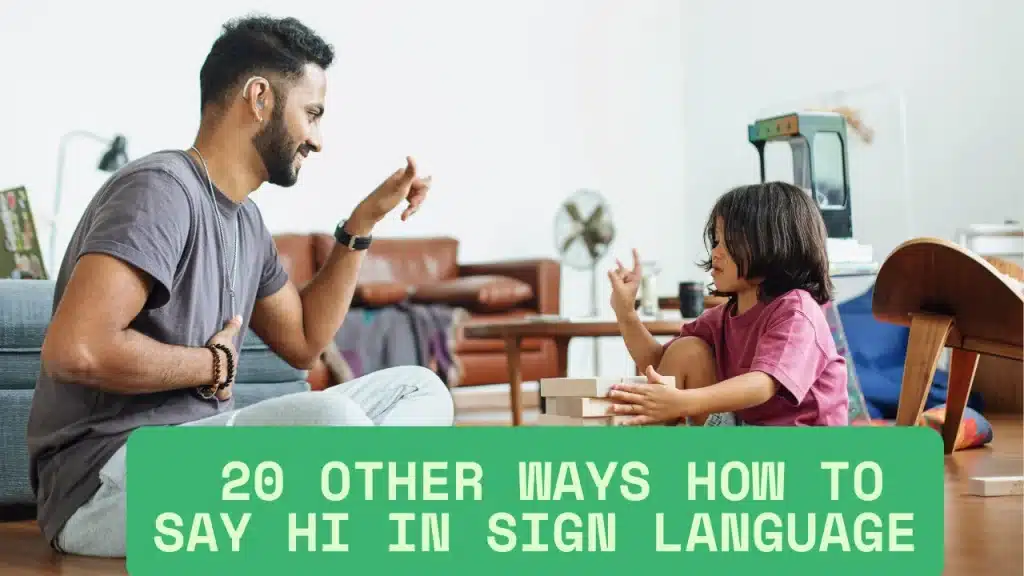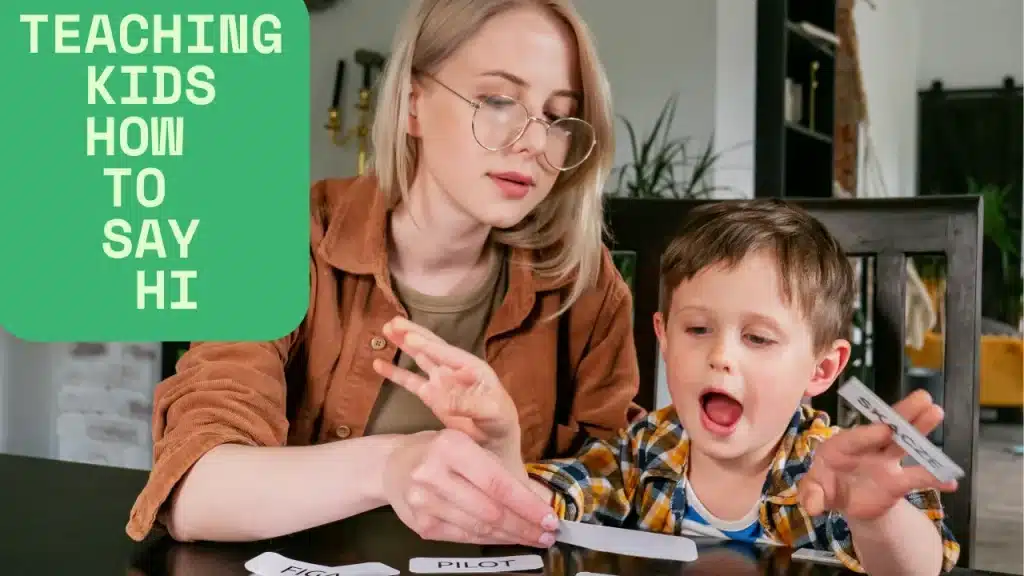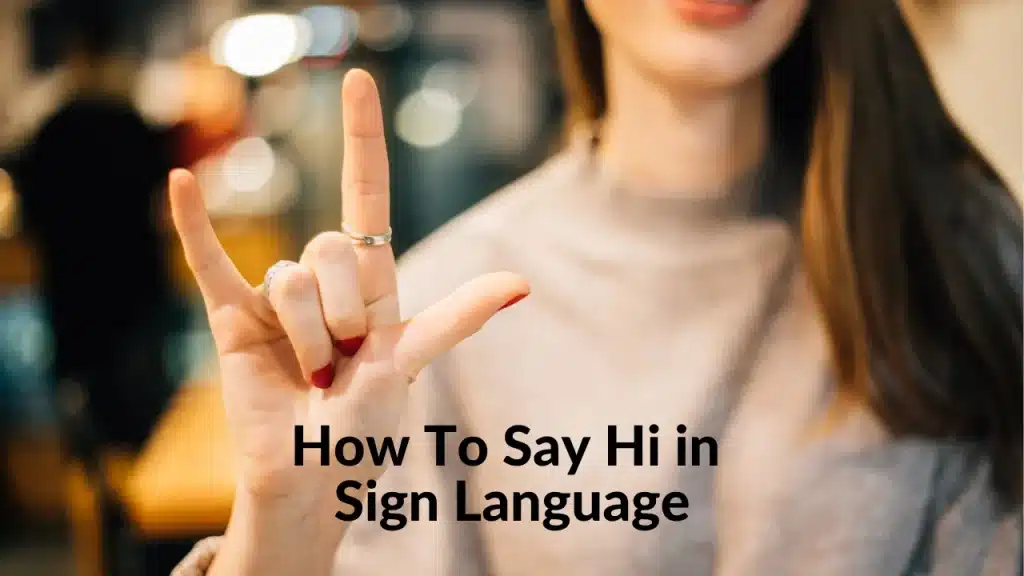Learning how to say hi in sign language opens the door to a more inclusive world. Whether you want to talk to someone who is deaf or just enjoy learning new things, it’s a great skill to have. Many people assume that learning sign language is hard, but starting with greetings is simple and fun.
American Sign Language (ASL) is the most used sign language in North America. It has its own grammar, culture, and gestures. Saying “hi” or “hello” in ASL is one of the first and easiest signs you can learn.
Let’s explore how this sign works, how to use it naturally, and why learning basic signs is so valuable.
Read more about: 20 other ways to say happy valentine’s day
What is American Sign Language?
Before diving into it, you need to know a little about ASL. American Sign Language is a visual language used by the Deaf community in the United States and parts of Canada. It uses hand signs, facial expressions, and body language to express ideas.
It’s not just a set of hand gestures—it has its own grammar and sentence rules. You can’t translate English word-for-word into ASL. Instead, you learn phrases and ideas in context.
Even though ASL is different from English, learning simple greetings is easy. Saying “hi” is often the first step.
How to Say Hi in Sign Language the Right Way
To understand how to say hi in sign language, imagine doing a small, friendly hand salute-like welcoming gesture. This gesture is friendly and quick. You raise your dominant hand, keep your palm open and fingers together, and lightly tap or wave outward from your forehead.
This motion is similar to a casual salute. You don’t need to exaggerate it. A quick and smooth gesture is enough. You can smile when you do it because facial expressions matter in ASL.
| Step | Action |
|---|---|
| 1 | Raise your dominant hand with a flat palm |
| 2 | Place the hand near your forehead |
| 3 | Move the hand outward like a wave or salute |
| 4 | Smile or nod to show a friendly emotion |
Doing this motion tells the other person that you are greeting them. It’s informal and great for everyday use.
20 Other Ways How to Say Hi in Sign Language

1. Hi
Raise your dominant hand near your forehead and wave outward. It’s casual and friendly.
2. Hello
Same motion as “hi” but can be used in more formal situations. A little more extended in motion.
3. How Are You?
Sign “HOW” with both hands curved, then point to the person (YOU). This is a great way to greet someone politely.
4. What’s Up?
Touch your middle fingers to your chest and flick them upward while raising your eyebrows.
5. Good Morning
Touch one hand to your chin (GOOD), then use the other to mimic the sun rising under your arm (MORNING).
6. Good Afternoon
Sign “GOOD” as before, then rest your dominant hand over your non-dominant arm angled downward for “AFTERNOON.”
7. Good Evening
Do the “GOOD” sign, then rest your dominant curved hand over the back of your non-dominant hand near the wrist.
8. Good Night
Same as “Good Evening,” but your dominant hand curves farther over the non-dominant hand, like the sun setting.
9. Wave
A simple wave is universal and understood in the Deaf community. It’s casual and easy.
10. Peace Sign
Holding up a peace sign with a smile is often used by younger people to greet friends casually.
11. Thumbs Up
Used as a quick, friendly greeting or acknowledgment. It’s not formal but accepted.
12. Fingerspelling “Hi”
Spell “H-I” using fingerspelling if you’re unsure about the proper gesture or want to emphasize clarity.
13. Nodding While Signing
Combine a “hi” sign with a gentle head nod. This shows acknowledgment and adds warmth.
14. Raised Eyebrows
In ASL, raising your eyebrows while signing “hi” or “how are you” adds a friendly tone.
15. “Long Time No See”
Use one hand to mimic looking through binoculars, followed by signs for “no” and “see.” Friendly and nostalgic.
16. Signing “Nice to Meet You”
This is great for first-time greetings. Use both index fingers meeting in the middle after signing “nice.”
17. Signing “Hey”
Extend your arm out and flick your hand, or simply wave with emphasis. It shows casual excitement.
18. Hug Sign
Cross both arms over your chest and smile. This is often used to greet close friends or family.
19. Facial Expressions Only
In group settings, sometimes a facial gesture with eye contact and a smile replaces a hand sign.
20. Regional/Slang Gestures
Some Deaf communities have regional greetings. For example, younger people may create casual signs like tapping a chest twice.
Saying Hello vs. Hi in ASL
Now you may wonder if there’s a difference between saying “hi” and “hello” in ASL. Both are signed the same way. The motion from the forehead out is the universal greeting in American Sign Language.
So if you’re looking to learn it, you’re also learning how to say “hello.” ASL uses the same sign for both because it focuses on meaning over exact word match.
Still, your facial expression adds meaning. A quick wave and a bright smile shows friendliness. A serious face can mean the greeting is formal or part of a serious conversation.
Importance of Facial Expressions in Sign Language
When you learn it, you quickly see that your face matters. In ASL, the face shows emotions, questions, and even grammar. You can say “hi” with a happy face to greet a friend or with a calm face in a formal setting.
Facial cues are a major part of sign language. They give life to your signs and help the other person understand your mood.
For example, if you want to greet a child, a big smile and wave makes the sign warmer. If you are meeting someone new in a professional setting, a calm nod while signing “hi” may be better.
Read more about: 20 other ways to say have a great weekend
Common Greeting Phrases in Sign Language
Once you’ve learned it, you may want to try other greetings. People in the Deaf community often use simple phrases to start conversations. These phrases build on what you already know.
Let’s explore a few basic greetings:
| English Phrase | ASL Description |
|---|---|
| How are you? | “HOW” is signed with bent hands twisting outward, followed by pointing at the person (“YOU”) |
| Good morning | Sign “GOOD” by touching lips then palm, “MORNING” by raising one arm like the sun rising |
| Good afternoon | Sign “GOOD,” then place one hand over the other forearm for “AFTERNOON” |
| Good night | Sign “GOOD,” then curve hand over the back of the other hand to show “NIGHT” |
| What’s up? | Flick middle fingers off your chest while raising eyebrows |
These are natural signs that you can use in daily life. Knowing how to sign “hi” helps you build more vocabulary over time.
Differences in Sign Language Around the World
If you’re learning it, it’s important to know that not all sign languages are the same. ASL is used in the U.S. and parts of Canada, but other countries have their own versions.
For example:
| Country | Sign Language Used | Is “Hi” the Same? |
|---|---|---|
| United Kingdom | British Sign Language | Different from ASL, different gestures |
| Australia | Auslan | Similar but not the same |
| Japan | Japanese Sign Language | Completely different |
| France | French Sign Language | Different system, different signs |
So, learning it in the U.S. may not apply worldwide. Make sure to learn the sign language of the region you’re communicating in.
Learning Sign Language With Apps and Videos
The best way to remember it is through practice. Today, there are many free tools that can help you learn. Apps like Lingvano, The ASL App, and Hands On ASL offer easy lessons.
YouTube is another great source. Search for short clips that teach basic greetings. Seeing people sign is often easier to learn from than pictures alone. Practice in front of a mirror to check your hand shape and motion.
Also, try signing to yourself during the day. Say “hi” to your reflection, pet, or family member. Repetition helps make it a habit.
Teaching Kids How to Say Hi

It’s a great idea to teach children about it. Kids pick up gestures quickly and enjoy learning by doing. Start with simple signs like “hi,” “bye,” and “thank you.”
Use fun ways to teach, like songs or games. Make a game where your child gets a sticker every time they remember the sign. Watch sign language storybooks online together.
Kids who learn sign language early often become more empathetic and aware of others. It also helps them become better communicators.
Real-Life Situations to Use Sign Language Greetings
You might be thinking about when to use your new skill. Here are real-life places where knowing this is useful.
At school, if you see a Deaf classmate, you can sign “hi” to start a friendship. At work, it can help you connect with Deaf coworkers or clients. During public events or stores, you can greet someone using ASL instead of just smiling.
Even in online meetings, signing “hi” on video can create an inclusive space. People feel seen and appreciated.
Read more about: 20 Other Ways to Say Happy Birthday in Advance
Final Thoughts
Now you understand exactly how to say hi in sign language and why it matters. Learning just one sign can help bridge worlds. It shows that you care and want to communicate in a way that includes everyone.
Remember, the key is to keep your hand flat, start near your forehead, and move outward. Smile or nod to add emotion. It’s quick, easy, and very impactful.
As you continue learning ASL, start with greetings and basic questions. Practice with family or use online tools to improve. You’re not just learning a sign—you’re showing respect to a whole community.







